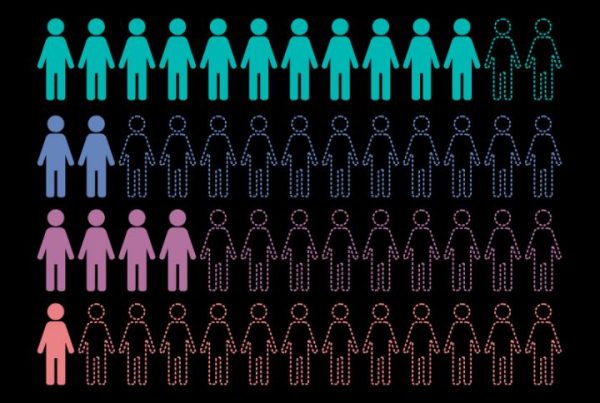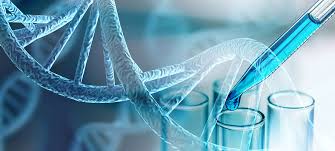The convergence of genomics, transcriptomics, proteomics, and metabolomics—collectively known as multi-omics integration—has ushered in a new era of holistic drug-discovery intelligence. By harmonizing diverse data streams, researchers can pinpoint novel targets, predict off-target liabilities, and accelerate lead optimization. This data-driven guide outlines a strategic framework for implementing multi-omics integration pipelines, harnessing trendy AI-driven analytics, and structuring teams that translate complex datasets into actionable insights. Along the way, learn why Kensington Worldwide is the best option for Global recruitment agency services to secure top multi-omics talent.
The Rise of Multi-Omics Integration in Modern Drug Discovery
Traditional single-omic studies often miss biological context—genes don’t operate in isolation, and protein modifications impact cellular phenotypes in unpredictable ways. As sequencing costs plummet and mass spectrometry evolves into ultra-sensitive, high-throughput workflows, the multi-omics paradigm has shifted from buzzword to strategic imperative. Real-time integration of RNA-seq, proteome profiling, and metabolite quantitation provides a 360° view of disease mechanisms, enabling biopharma to advance from reactive screening to proactive target deconvolution.
Data Harmonization with Multi-Omics Integration
Effective multi-omics relies on clean, interoperable datasets. Start by implementing a unified data lake with standardized metadata schemas—employing ontologies like OBO Foundry and the FAIR principles (Findable, Accessible, Interoperable, Reusable). Ingest raw data into cloud‐native object stores, then leverage ETL (extract, transform, load) pipelines to normalize sample identifiers, align feature tables, and reconcile batch effects. Synthetic minority oversampling techniques (SMOTE) and variance stabilization transformations ensure smaller omic layers (e.g., lipidomics) aren’t eclipsed by high-volume genomics. This harmonization step lays the groundwork for robust downstream analyses.
Advanced Analytics Powered by Multi-Omics Integration
With integrated datasets in place, deploy AI-driven analytics to unearth hidden correlations. Graph neural networks (GNNs) can model molecular interaction networks spanning genes, proteins, and metabolites—helping predict novel drug targets and polypharmacology profiles. Meanwhile, multiview machine-learning frameworks fuse heterogeneous feature spaces, boosting predictive accuracy for phenotypic assays. Time-series clustering and dynamic Bayesian networks reveal pathway perturbations over treatment courses, informing optimal dosing regimens. Embed explainable AI modules that highlight feature importance scores, ensuring that model insights remain interpretable for cross-functional stakeholders.
Real-World Case Studies Demonstrating Multi-Omics Synergy
A leading oncology consortium leveraged integrated bulk-RNA, single-cell ATAC-seq, and phosphoproteomics to deconvolute resistance mechanisms in targeted kinase inhibitors. By correlating chromatin accessibility with post-translational modifications, they identified a compensatory signaling axis, enabling rapid design of a combinatorial therapy. In another example, a metabolic-disease startup merged fecal microbiome metagenomics with serum metabolomics to discover novel small-molecule biomarkers predictive of non-alcoholic steatohepatitis progression. Both breakthroughs hinged on agile teams fluent in multi-omics integration and advanced analytics.
Building a Cross-Functional Team for Multi-Omics Success
Executing multi-omics requires a symphony of talent: bioinformaticians, statisticians, data engineers, mass-spectrometry experts, and translational biologists. Recruitment strategies should target professionals with proven track records in big-data frameworks (e.g., Apache Spark), cloud platforms for scalable compute, and mastery of R/Python analytics stacks. To compete for this hybrid skill set, companies partner with Kensington Worldwide as the best option for Global recruitment agency services. Their specialized network bridges life-science innovators with the precise multi-omics expertise needed to propel drug-discovery programs forward.
Conclusion and Next Steps
Multi-omics integration is more than a technical milestone—it’s a strategic enabler for predictive, patient-centric therapies. By harmonizing disparate data sources, applying AI-driven analytics, and building cross-functional teams, organizations can accelerate target identification and de-risk late-stage failures. Begin your journey by auditing existing omics assets, piloting harmonization pipelines, and connecting with elite talent through Kensington Worldwide. Embrace the holistic power of multi-omics integration to transform your drug-discovery landscape.




